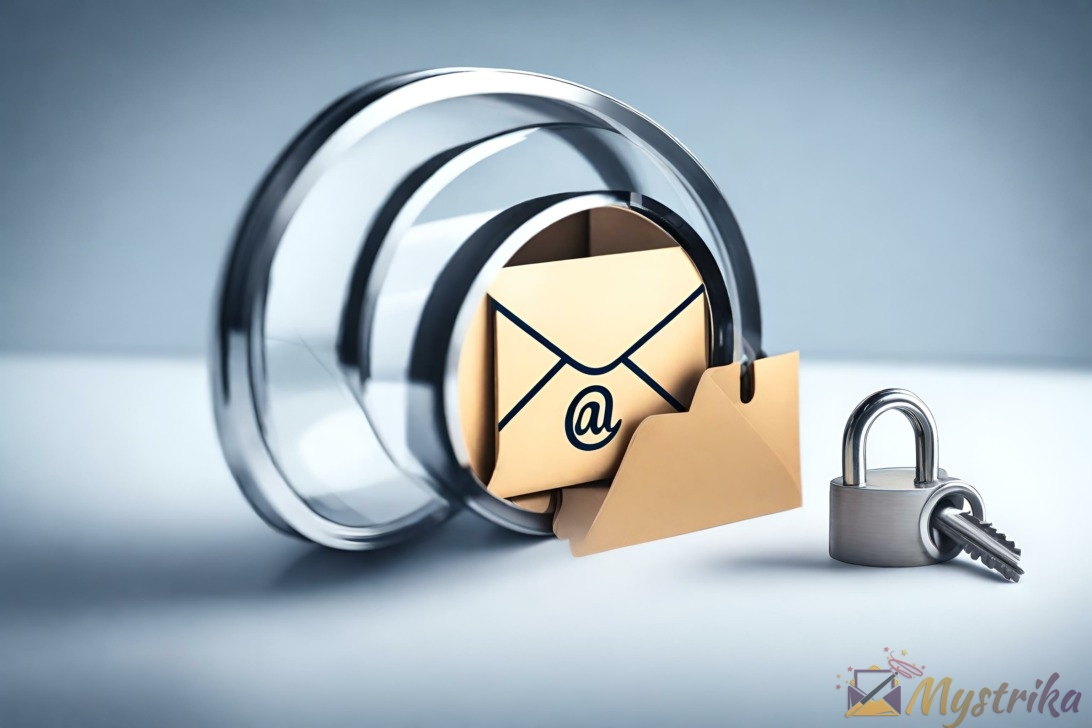Are you aware that in 2021, around 306.4 billion emails were sent and received each day? That’s a staggering number, indicating just how important email communication is in our daily lives. However, with this vast amount of email communication comes the need for regulations to protect individuals’ privacy rights.
If you’re someone who sends cold emails as part of your business strategy, it’s essential to understand these regulations to stay compliant and avoid legal repercussions. In this article, we’ll delve into the world of cold emailing and email privacy regulations to arm you with the knowledge necessary to keep yourself legally protected while still being able to engage with potential clients and customers through email. So let’s get started!
Overview of Cold Emailing
Get ready to discover the ins and outs of reaching out to potential clients or customers through an electronic message. Crafting effective cold emails is a great way to introduce your business, product, or service without spending a lot on advertising campaigns. However, it can be challenging to grab the attention of your audience with so many messages flooding their inboxes.
To create a successful cold email campaign, you need to target the right audience. Sending generic messages to everyone on your list won’t cut it. Instead, take time to research and personalize each email according to your recipient’s interests and needs. This will not only increase the chances of getting a response but also build credibility and trust between you and your prospects.
Understanding email privacy regulations is crucial when crafting cold emails. You don’t want to break any laws while trying to grow your business. Therefore, before sending an unsolicited email, make sure you comply with applicable laws such as CAN-SPAM Act, GDPR (General Data Protection Regulation), CASL (Canadian Anti-Spam Legislation), etc. Knowing these regulations will help you avoid legal troubles and preserve your reputation as a responsible marketer who values their customer’s privacy.

Understanding Email Privacy Regulations
It’s vital to comprehend the regulations surrounding electronic communication, as failure to do so may result in legal consequences. Email privacy regulations are put in place to protect individuals from having their personal information disclosed without consent. One way businesses can ensure they are following these regulations is by using email encryption to protect sensitive information.
Data retention policies are another important aspect of email privacy regulations. These policies dictate how long companies can keep emails and other electronic communications before they must be deleted or archived. It’s crucial for businesses to adhere to these policies, as failure to do so could result in legal penalties.
Understanding email privacy regulations is essential for any business that engages in electronic communication, especially when it comes to cold emailing. In the next section, we’ll discuss obtaining consent and how it relates to staying within these regulations.
Obtaining Consent
You need to make sure your subscribers feel valued and respected by obtaining their consent before sending them any electronic communication, as this can build trust and loyalty with your audience. There are two types of consent that you should be familiar with: explicit consent and implied consent. Explicit consent requires individuals to actively opt-in to receive emails from your company, while implied consent assumes that an individual has given permission based on a previous relationship or interaction with your organization.
To obtain explicit consent, you must provide clear and concise information about what the subscriber is agreeing to receive when they sign up for your email list. This includes details like how often they will receive emails, the type of content they can expect, and who will be sending the messages. Additionally, you must ensure that the subscriber understands they have the right to unsubscribe at any time.
Implied consent can be trickier to navigate because it relies on assumptions made about a person’s willingness to receive communications based on prior interactions or relationships. However, it’s important to note that implied consent still requires some level of action taken by the individual in order for it to be considered valid. For example, if someone has made a purchase from your website in the past, you may assume that they would welcome further marketing emails related to similar products or services.
- Show empathy towards subscribers by respecting their wishes.
- Provide transparency about what subscribers are agreeing to when they sign up.
- Make it easy for them to unsubscribe if they change their mind.
- Follow regulations related to both explicit and implied consent.
By obtaining explicit or implied consent from subscribers before emailing them, you’re taking an important step towards building a positive relationship with your audience while also staying within legal guidelines regarding email privacy regulations. However, collecting personal information goes beyond just obtaining initial permission – it involves proper storing and handling of sensitive data as well. In order to keep both yourself and subscribers protected from potential breaches in security or privacy, it’s important to have a solid plan in place for collecting and storing personal information.
Collecting and Storing Personal Information
Now that you have obtained consent from your subscribers, it’s important to understand how to properly collect and store their personal information to ensure their privacy and protection. When collecting data, make sure you only ask for the information that is necessary for your email marketing campaign. This includes their name, email address, and any other relevant details related to the purpose of your email.
To protect your subscribers’ data, it’s crucial to implement data security measures. Use encryption tools when storing data on servers and limit access only to authorized personnel. Ensure that all devices used in handling subscriber information are secure by using antivirus software and strong passwords.
Failing to comply with legal regulations concerning data collection can lead to severe legal consequences such as fines or even imprisonment. Make sure you’re aware of the laws governing email privacy regulations in your region and follow them strictly. Remember that the trust of your subscribers lies in respecting their privacy rights; thus, securing their personal information should be a top priority for every business owner engaging in email marketing.
As you move forward with building an ethical cold emailing strategy, identifying yourself clearly will play an essential role in building trust with potential customers. By introducing yourself honestly in every outreach message sent out through your campaign, you’ll showcase integrity while establishing credibility within recipients’ minds before they even open or read anything else from you.
Identifying Yourself Clearly
In this section, you’ll learn how to establish trust and credibility with potential customers by clearly identifying yourself in every outreach message, which can increase the likelihood of a positive response from recipients. Clarifying your identity is important for transparency and avoiding deception. You should always provide your full name, company name, contact information, and purpose for reaching out in the email.
Avoid using misleading subject lines or false pretenses to trick recipients into opening your emails. This could lead to legal consequences and damage your reputation as a trustworthy business. Instead, use subject lines that accurately reflect the content of your email and provide value to the recipient.
By taking steps to clarify your identity and avoid deception in your outreach messages, you can build a positive relationship with potential customers based on trust and honesty. In the next section, you will learn about honoring unsubscribe requests and respecting email privacy regulations without losing valuable leads or damaging your brand reputation.
Honoring Unsubscribe Requests
If you want to build a positive relationship with your potential customers and maintain their trust, it’s important to honor their unsubscribe requests in a timely manner. One way to do this is by providing an easy-to-follow opt-out process in every email you send out. Make sure that the process is simple and straightforward, without requiring too much personal information or steps. This will make it easier for your recipients to opt-out if they choose to do so.
Ignoring unsubscribe requests can lead to legal consequences, such as violating privacy regulations like GDPR or CAN-SPAM laws. It’s crucial that you take these requests seriously and act on them promptly. Failure to comply with these regulations can result in hefty fines for your business, damaging your reputation and credibility in the industry.
To ensure that you stay on top of any unsubscribe requests, consider setting up an automated system that removes unsubscribed users from your mailing list right away. Additionally, always keep track of the people who have opted out of receiving future emails from you and refrain from sending them any further communications. By doing this, you’ll not only avoid legal issues but also show respect for the freedom and privacy of your subscribers.
As you strive to maintain good email practices and respect the privacy of your subscribers, avoiding spam filters is another critical aspect worth considering. So how can you ensure that your emails get through? Let’s explore some tips on how to avoid getting flagged as spam by email providers…

Avoiding Spam Filters
When it comes to avoiding spam filters, you need to focus on three things: using clear and relevant subject lines, avoiding certain keywords, and limiting the use of images. To start with, your subject line should clearly communicate what your email is about and why it matters to the recipient. Secondly, there are certain words that can trigger spam filters, so you need to be careful about how you word your emails. Finally, too many images in an email can make it look like a promotional message and get flagged as spam. By following these guidelines, you can increase your chances of getting your message into the inbox instead of being relegated to the spam folder.
Using Clear and Relevant Subject Lines
Make sure your subject line is crystal clear and relevant to grab the attention of your recipient. The importance of clarity cannot be overstated when it comes to email subject lines. Here are some strategies for attention-grabbing subject lines that will ensure your emails are opened and read:
- Use action-oriented verbs: Verbs like “get,” “join,” or “download” can make your subject line more actionable and encourage readers to open the email.
- Keep it short and sweet: Subject lines between 6-10 words have been found to have the highest open rates.
- Personalize whenever possible: Including the recipient’s name or other personalized information in the subject line can make them feel valued and increase their likelihood of opening the email.
By following these strategies, you’ll increase your chances of getting your cold emails opened and read by potential clients or customers. However, it’s important to also be aware of certain keywords that can trigger spam filters and cause your emails to go straight to the junk folder.
Avoiding Certain Keywords
Avoiding certain words in your subject line is crucial to prevent your emails from being marked as spam and never reaching their intended recipient’s inbox. Email providers use keyword filtering to block emails with specific phrases that are commonly associated with spam or phishing attempts. Words like “free,” “urgent,” and “limited time offer” are often flagged by email providers, so it’s best to avoid them altogether.
But how do you craft a compelling subject line without these typical marketing buzzwords? One option is to focus on creating personalized subject lines that speak directly to the recipient and their needs. Another alternative is to use other outreach methods, such as social media or phone calls, to supplement your email efforts. By avoiding spammy language and exploring new ways of connecting with potential clients, you can increase the chances of your emails actually being read and responded to.
When it comes to cold emailing, limiting the use of images is another important factor in staying legal and professional.
Limiting Use of Images
You don’t want to risk your email being marked as spam or unprofessional, so it’s important to be mindful of the amount and type of images you use in your subject line and email content. While images can be a great way to catch someone’s attention and make your message more visually appealing, they can also cause issues with email privacy regulations. Using alternative formats like GIFs or emojis may seem harmless, but they could potentially violate anti-spam laws if not used correctly.
Furthermore, using too many images or including inappropriate ones could lead to legal implications for your business. Make sure any images you do use are relevant and add value to the message you’re trying to convey. Consider using descriptive alt text for any images you include in case they don’t load properly for the recipient. By limiting the use of images and being aware of their potential legal implications, you’ll help ensure that your emails are professional, compliant with regulations, and effective at reaching your intended audience. Now that we’ve covered how to avoid getting caught by spam filters and email privacy regulations let’s talk about personalizing your emails!
Personalizing Your Emails
Get your recipients hooked from the start by adding a touch of personalization to each email. Using personalization tokens, such as the recipient’s name or company, can make them feel like you are speaking directly to them and not just sending a mass email. Avoid generic greetings like “Dear Sir/Madam” or “To Whom It May Concern.” Instead, use their name or title if available.
Personalizing your emails doesn’t just stop at using their name. You can also tailor the content of your email based on their interests or behavior. For example, if they have previously downloaded a certain whitepaper from your website, you can mention it in the email and offer related content that may be of interest to them. This shows that you have done your research and are providing valuable information specifically for them.
By personalizing your emails and offering relevant content, you increase the chances of building a relationship with your recipients and ultimately converting them into customers. In the next section about providing value to recipients, we will explore how this technique ties into creating meaningful connections with potential clients through email marketing strategies that generate results.
Providing Value to Recipients
In this section, you’ll discover how to make your emails as valuable as a pot of gold at the end of a rainbow by creating content that resonates with your recipients and keeps them coming back for more. Providing value is crucial in email marketing because it helps establish trust and credibility with your audience. By tailoring your content to their interests, needs, and pain points, you can show them that you understand their situation and are here to help.
Here are three sub-lists of ideas on how to create value in your emails:
- Offer helpful tips or advice related to your niche or industry.
- Share educational resources such as blog posts, webinars, or podcasts that might interest them.
- Provide exclusive discounts or special offers for being a subscriber.
Tailoring content doesn’t mean sending the same message to everyone on your list. Instead, segmenting your audience based on demographics or behavior can help you deliver personalized messages that resonate with each group. For instance, if someone has shown interest in a particular product or service, you can send them follow-up emails with more information about it. Or if someone hasn’t opened an email in a while, you can send them a re-engagement campaign with an enticing subject line.
By creating value and tailoring content to individual recipients, you increase the chances of building long-term relationships with them. Remember that people don’t want to feel like they’re just another number on your list; they want to feel valued and heard. In the next section about following up appropriately, we’ll discuss how often you should be emailing people without being too pushy or spammy.

Following Up Appropriately
Make sure to follow up with your recipients in a way that is appropriate and respectful, without bombarding them with too many emails or coming across as spammy. Building rapport is crucial when it comes to following up. You want to establish a relationship with the recipient so they feel more inclined to respond to your emails. This can be done by referencing previous conversations, mentioning common interests, or simply thanking them for their time.
Timing follow ups is just as important as building rapport. You don’t want to come across as pushy or annoying by sending too many emails too quickly. On the other hand, you also don’t want to wait too long and risk losing their interest altogether. A good rule of thumb is to wait at least a week before sending a follow-up email. If they still haven’t responded after two or three attempts, it may be time to move on.
Overall, following up appropriately requires balance and tactfulness. By building rapport and timing your follow-ups correctly, you can increase your chances of receiving a response without causing annoyance or frustration for the recipient. In the next section, we’ll discuss how ensuring compliance across your organization can help maintain trust with both current and potential clients.
Ensuring Compliance Across Your Organization
You need to ensure that your organization is following the necessary guidelines and regulations to maintain trust with clients. One way to do this is by training employees on email privacy regulations and their responsibilities in maintaining compliance. This can include educating them on proper data handling, obtaining consent for communication, and providing opt-out options.
Another key aspect of ensuring compliance across your organization is monitoring employee behavior. Regularly auditing email communications can help identify any potential violations or areas where additional training may be needed. It’s also important to have clear policies in place regarding email usage, including consequences for non-compliance.
By taking these steps, you can demonstrate to clients that their privacy is a top priority for your organization. Not only does this help maintain trust and loyalty among existing customers, it can also attract new business from those who prioritize data security and privacy in their relationships with vendors. However, failing to comply with these regulations can result in serious consequences for both individuals and organizations alike.
Moving forward into the subsequent section about ‘consequences of non-compliance’, it’s important to understand the severity of such actions. Even unintentional violations of email privacy regulations can result in legal action, fines, or damage to reputation. Therefore, it’s crucial that all employees are properly trained and monitored on compliance measures to avoid potential negative outcomes for both the organization and its clients.
Consequences of Non-Compliance
If you’re not careful about compliance, there can be serious repercussions for your company and its reputation. Repercussions for violations of email privacy regulations can include hefty fines, legal action, and damage to your brand’s image. It’s important to remember that these regulations are in place to protect individuals’ personal information from being misused or exploited.
Legal ramifications for non-compliance vary depending on the specific regulation violated and the severity of the violation. The General Data Protection Regulation (GDPR), for example, can result in fines up to 4% of a company’s global revenue or €20 million (whichever is greater). In addition to financial penalties, companies may also face lawsuits from individuals whose privacy has been compromised.
To avoid these consequences, it’s crucial that all employees within your organization understand the importance of compliance with email privacy regulations. This includes regularly reviewing and updating policies related to email communication, as well as providing training on best practices for collecting and storing personal data. Seeking legal counsel can also help ensure that your company is fully compliant with relevant laws and regulations.
In order to protect your business’s reputation and avoid costly penalties, it’s essential to prioritize compliance with email privacy regulations. By understanding the potential repercussions for violations and taking steps towards full compliance, you’ll be able to maintain trust with customers while safeguarding their sensitive information. Seeking legal counsel can provide valuable guidance in navigating complex regulatory requirements.
Seeking Legal Counsel
Let’s talk about why seeking legal advice is essential when it comes to staying compliant with email privacy regulations. As a business owner, you want to make sure that your cold emails are not only effective but also legally sound. This is where seeking legal counsel can be beneficial.
One of the benefits of seeking legal counsel is that you can ensure that your cold emails comply with all relevant laws and regulations. A reputable lawyer will have a thorough understanding of these rules and can help you navigate any potential pitfalls. They can also provide guidance on how to obtain consent from recipients and what information needs to be included in your emails.
Finding reputable legal services may seem daunting, but there are many resources available to help you. You can start by asking for referrals from other business owners or industry associations. You can also research online reviews and ratings for lawyers in your area. It’s important to find someone who specializes in email privacy regulations and has experience working with businesses similar to yours.
As you seek out legal counsel, keep in mind that email privacy regulations are constantly changing. In the next section, we’ll discuss how to stay up-to-date on these changes so that you can continue sending effective and compliant cold emails without interruption or penalty.

Keeping Up with Changing Regulations
Stay ahead of the curve and adapt to evolving laws by staying informed about changes in email privacy regulations. Regulatory compliance is crucial when it comes to cold emailing, so keeping up with industry updates is essential. Laws surrounding data collection and privacy are constantly changing, and it’s important to be aware of these changes to avoid any legal issues.
As a business owner or marketer, it’s your responsibility to make sure that you’re following all relevant email privacy regulations. Failure to do so can result in hefty fines or even legal action against your company. By keeping up with regulatory compliance, you can ensure that your cold emails are both effective and legally compliant.
Staying informed about changes in email privacy regulations may seem tedious, but it’s necessary for the success of your business. Subscribe to newsletters and follow industry leaders on social media platforms like LinkedIn or Twitter. This will help you stay up-to-date on any new developments in the email marketing world without having to spend hours researching yourself.
Summary and Recap of Best Practices
By staying informed and proactive in keeping up with changes in the email marketing world, you can ensure that your business is operating ethically and maintaining a competitive edge. As we’ve discussed, regulations are constantly changing to protect consumers’ privacy rights. It’s crucial that businesses stay aware of these changes to avoid violating any laws or risking their reputation.
To ensure your business maintains transparency and builds trust with recipients, consider implementing the following best practices:
- Clearly state your purpose for sending the email
- Provide an easy opt-out option
- Only send emails to individuals who have given explicit consent
In addition to these practices, regularly reviewing and updating your privacy policy can also help build trust with recipients. By clearly outlining how you collect, use, and protect personal information, you’re showing that you value their privacy.
Overall, it’s important for businesses to prioritize transparency and trust when it comes to email marketing. By staying informed about regulations and implementing best practices like those listed above, you can establish a positive relationship with recipients while also operating ethically within legal boundaries. Remember that building this trust takes time but will ultimately lead to better engagement rates and customer loyalty.
Conclusion
In conclusion, staying legal when cold emailing means understanding and adhering to email privacy regulations. Obtaining consent and collecting personal information in a transparent manner are crucial steps in this process. It is also important to clearly identify yourself and provide recipients with the option to opt-out.
Remember that non-compliance can lead to serious consequences, such as fines or legal action. Seeking legal counsel can help ensure that your practices are compliant with current regulations. Keep up with changing regulations by regularly reviewing industry updates and seeking guidance when needed.
Overall, following best practices for cold emailing not only keeps you legally compliant but also builds trust with potential customers. As the saying goes, “an ounce of prevention is worth a pound of cure.” So take the time to understand email privacy regulations and implement these best practices to stay on the right side of the law.

